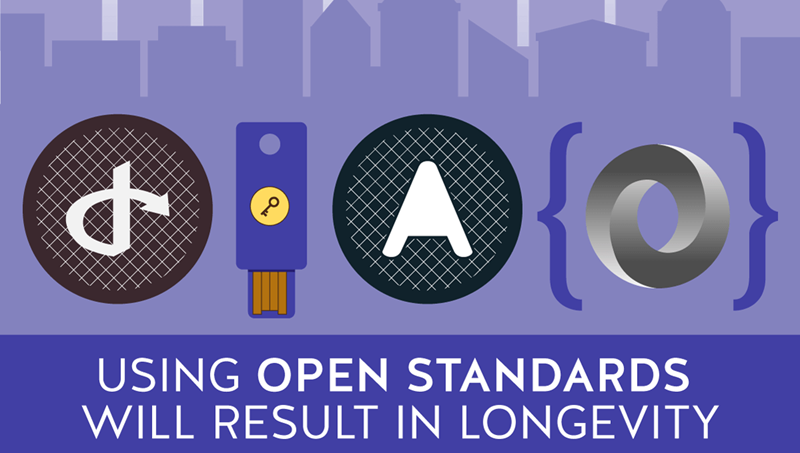In 2016, the tech industry saw a prolific convergence of open standards and open source, marking a significant shift in the way technology is developed and used. Open standards refer to the publicly accessible agreements that allow for the interoperability of different technologies, while open source refers to the software whose source code is made freely available for modification and redistribution. The intersection of these two concepts has broad implications for the sector, fostering a collaborative environment where innovation thrives and proprietary restrictions lessen. This amalgamation has enhanced the digital landscape, allowing for increased flexibility, interoperability, and the acceleration of technological development.
The year 2016 saw businesses, developers, and organizations increasingly embracing this blend of open standards and open source. It led to the creation of a more inclusive tech environment that focused on the shared benefit of all, rather than the exclusive gain of a single entity. The open source movement, in particular, has been fundamental in driving this change. It has allowed developers from around the world to contribute to a project, providing a diverse range of perspectives, ideas, and skills. This global collaboration has propelled the creation of innovative and robust technology solutions that otherwise might not have been possible.
Simultaneously, the adoption of open standards has addressed the longstanding problem of compatibility and interoperability between different technologies. By adhering to a common set of guidelines, developers can ensure their software or hardware can communicate and work seamlessly with others. This has not only led to an enriched user experience but has also promoted healthy competition in the tech industry by eliminating proprietary barriers.
In 2016, the marriage of open source and open standards was instrumental in the rise of several groundbreaking technologies. For example, the development and implementation of HTML5, a cornerstone of modern web technology, were significantly propelled by the adoption of open standards and open source practices. Similarly, the open source software Linux continued to thrive, with its open standards-based kernel enabling compatibility with a vast array of hardware and software.
Moreover, the fusion of open standards and open source has also led to profound changes in the business models of many tech companies. Many businesses have shifted away from proprietary models to more open, collaborative practices. They are harnessing the power of global collaboration and shared knowledge to drive innovation and market growth.
However, the integration of open standards and open source has also raised certain challenges. Issues around licensing, intellectual property, and quality control have emerged as notable concerns. These challenges, however, have also prompted the industry to rethink and refine its practices, leading to more sophisticated and comprehensive approaches to open source and open standards.
In conclusion, the merging of open standards and open source in 2016 marked a significant turning point in the tech industry. It has set a new paradigm for technological development, characterized by collaboration, compatibility, and shared innovation. Despite the challenges, the benefits of this integration are undeniable, paving the way for a more inclusive, innovative, and interoperable digital future.

Key Achievements in Open Standards and Open Source Integration
Open standards and open source integration have achieved substantial advancements over the years, contributing significantly to the tech industry’s growth. One of the notable milestones is the development of the Linux operating system. Linux’s open-source model has led to widespread adoption, making it the backbone of many servers, mobile devices, and personal computers worldwide. It has also paved the way for the creation of numerous other open-source software projects.
Another key achievement is the development of the HTTP and HTML protocols, which are the foundation of the World Wide Web. These open standards allowed for the exchange of information over the internet, leading to the internet’s exponential growth and the creation of countless web applications. The maturation and widespread adoption of these protocols have led to significant innovations in technology, ranging from e-commerce to social networking.
Open source integration also led to the development of high-quality programming languages such as Python and JavaScript, which have become industry standards. These languages have provided the building blocks for many modern software applications and have paved the way for the development of other open-source software projects.
In the field of data management, open source projects like Apache Hadoop and MongoDB have revolutionized the way businesses handle large data sets. These tools have enabled businesses to analyze data in ways that were not possible before, leading to breakthroughs in fields like machine learning and artificial intelligence.
Open source and open standards have also revolutionized the way software is developed and distributed. The rise of platforms like GitHub has made it easier for developers to collaborate on projects, leading to faster development times and more innovative solutions.
Overall, the advancements in open standards and open source integration have not only transformed the tech industry but also have had a profound impact on society as a whole. They have democratized access to technology, enabling more people to participate in the digital revolution.
The Impact of Open Standards on Open Source Development
Open standards have a profound impact on open source development, acting as a catalyst for innovation and advancement in this area. Open standards refer to publicly available specifications that provide universal guidelines for systems or software development. These standards ensure compatibility, interoperability, and consistency across various platforms and applications. On the other hand, open source development entails creating software with source code that is freely accessible and modifiable.
The intersection of open standards and open source development has given rise to numerous benefits. Firstly, it promotes transparency, as the source code is readily available for scrutiny and modification. This openness fosters trust among users and developers, as they can ascertain the quality and security of the software. Secondly, it encourages collaboration and knowledge sharing among developers. This collaborative spirit accelerates the process of bug detection and resolution, thereby improving the reliability and stability of the software.
Moreover, open standards ensure that open source software can seamlessly interact with other software and systems, regardless of their origins or nature. This interoperability enhances the versatility and scalability of open source software, making them more appealing to a broader user base. Furthermore, open standards often outlive individual products or technologies. Thus, they provide a degree of longevity and continuity to open source projects, protecting them from the risks of obsolescence.
In addition, open standards can reduce the barriers to entry for new developers. Since the standards provide a clear roadmap for development, they can help novice developers understand and contribute to the project more effectively. This inclusiveness can lead to a more diverse and innovative open source community.
In conclusion, open standards play a vital role in open source development. They foster transparency, collaboration, interoperability, longevity, and inclusiveness, all of which are critical for the growth and sustainability of the open source ecosystem.

Notable Collaborations and Partnerships in 2016
In 2016, several significant collaborations and partnerships emerged that marked an innovative year across various industries. One of the most notable was the partnership between Sony and Spotify. This collaboration resulted in the launch of the PlayStation Music platform, integrating Spotify’s streaming service with Sony’s gaming console, thus providing gamers with an enriching music experience. Another noteworthy partnership was between Airbnb and American Express.
This union allowed American Express cardholders to use their loyalty points for bookings on Airbnb, offering an inventive way to reward customer loyalty. In the tech world, Google teamed up with Levi’s to produce the Commuter smart jacket. This garment combined fashion and technology, allowing wearers to control their smartphone through touch-sensitive fabric woven into the sleeve. On the education front, the collaboration between Apple and ConnectED aimed at transforming teaching and learning. Apple provided iPads, Macs, and other technological resources to schools, helping to bridge the gap in digital learning.
In the automotive industry, General Motors and Lyft formed a strategic alliance, with GM investing $500 million in Lyft to develop an integrated network of autonomous vehicles. Another noteworthy collaboration was between Microsoft and LinkedIn. Microsoft acquired LinkedIn for $26.2 billion, aiming to enhance its software offerings with LinkedIn’s network of professionals. Finally, in the healthcare sector, the partnership between IBM Watson Health and Quest Diagnostics stood out.
This alliance aimed to advance precision medicine by combining cognitive computing with genomic tumor sequencing. These collaborations and partnerships indicate how companies from different sectors are willing to pool their resources and expertise to drive innovation and improve customer experiences.
Challenges and Solutions in Combining Open Standards and Open Source
Combining open standards and open source can present numerous challenges. For one, merging the two may result in compatibility issues, which stem from the diversity of open source software. The variety of software versions, configurations, and dependencies can lead to problems when trying to integrate them with open standards, which are typically designed for broader, more general use. Another challenge is the potential for a lack of support and maintenance, as open source projects often rely on the dedication and expertise of volunteers. When these volunteers lose interest or lack the necessary skills, the software can become outdated or lose functionality.
Furthermore, open source software and open standards can often present issues of security. While open source software allows for community-based monitoring and reporting of vulnerabilities, the lack of a centralized authority can make it difficult to ensure that all potential security risks are identified and addressed. Additionally, the transparency of open source code can expose vulnerabilities to malicious users.
Despite these challenges, there are multiple solutions that can be implemented to address them. For compatibility issues, rigorous testing and quality assurance processes can be implemented to detect and fix issues early on. For support and maintenance, organizations can invest in dedicated resources or establish partnerships with commercial entities that offer professional support for open source software.
In terms of security, establishing a standardized security protocol for the development and maintenance of open source software can help ensure that all potential risks are identified and addressed. Additionally, the use of encryption and other security measures can help protect the transparency of open source code from malicious users. Combining open standards and open source, while challenging, can yield significant benefits, provided these challenges are effectively addressed.

Huawei will be sponsoring the IETF Hackathon
Huawei, a global giant in technology and telecommunications, has recently announced its plans to sponsor the IETF Hackathon, a highly significant event in the world of digital innovation. This collaboration promises to bring together some of the brightest minds in technology and telecommunications, offering them an opportunity to showcase their skills and ideas. Huawei’s sponsorship is an indication of their commitment to fostering creativity and driving technological advancement.
The IETF Hackathon, facilitated by the Internet Engineering Task Force, is a platform for developers, engineers, and innovators to come together and work on solutions for some of the most pressing challenges in the digital world. It is an event that encourages open collaboration, innovative thinking, and the creation of groundbreaking technology. Huawei’s involvement in this event will undoubtedly provide a boost to the participants, giving them access to cutting-edge tools, resources, and knowledge.
The association of Huawei with the IETF Hackathon is a strategic move, aligning with their mission to expand digital inclusion and improve connectivity worldwide. Their sponsorship represents a significant investment in the future of technology, demonstrating their dedication to shaping the course of digital innovation. Huawei’s decision to sponsor the event is expected to draw attention from all corners of the tech world, signifying the importance they place on fostering a culture of innovation.
Huawei’s sponsorship of the IETF Hackathon is a testament to the company’s commitment to driving forward the technological frontier. Their involvement will not only provide the resources required to make the event a success but will also inspire participants to push the boundaries of what is possible. This partnership between Huawei and the IETF Hackathon is a clear signal of the tech giant’s dedication to supporting and nurturing the next generation of innovators and game-changers in the technology industry.
